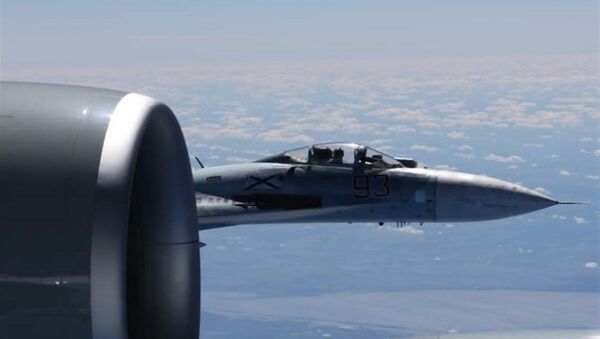A Russian Sukhoi Su-27 fighter jet has been scrambled to intercept a US Air Force surveillance aircraft flying over the Black Sea, the Russian Defence Ministry announced.
The US aircraft involved was said to be a Boeing RC-135 spy plane, with the Su-27 scrambled after ground-based radars had detected it as it approached the Russian maritime border.
"To identify the aerial target and prevent the violation of the Russian state border, an Su-27 fighter from the Air Defence Forces of the southern military district was scrambled. The crew of the Russian fighter identified the target as an RC-135 strategic reconnaissance plane belonging to the US Air Force and escorted it over the waters of the Black Sea," the ministry said in a statement.
According to the military, after the US plane turned around and moved away from the border, the Su-27 returned to its home airbase.
Saturday's incident is just the latest example of the long-running tensions which have existed between Russia and NATO since the wake of the Ukraine crisis in early 2014. In addition to beefing up troop deployments in Eastern Europe and setting up missile defence systems in Romania and Poland, the North Atlantic Alliance has dramatically increased patrols of strategic bombers, reconnaissance aircraft and stealthy spy drones along Russia's maritime borders in the Black, Baltic and Barents seas, as well as the Sea of Okhotsk, the Sea of Japan and the Bering Sea in the Russian Far East.
On 22 November, the United States formally quit the Open Skies Treaty, which enabled its aircraft to carry out missions to collect information lawfully about Russia's military forces and activities through specially marked aircraft. Russia has indicated that for the moment it has no plans to abandon the treaty, whose membership also includes other NATO states. However, last week, Russian Foreign Minister Sergei Lavrov said that the remaining treaty partners must stick to their obligations and not provide whatever data they collect to third countries.




